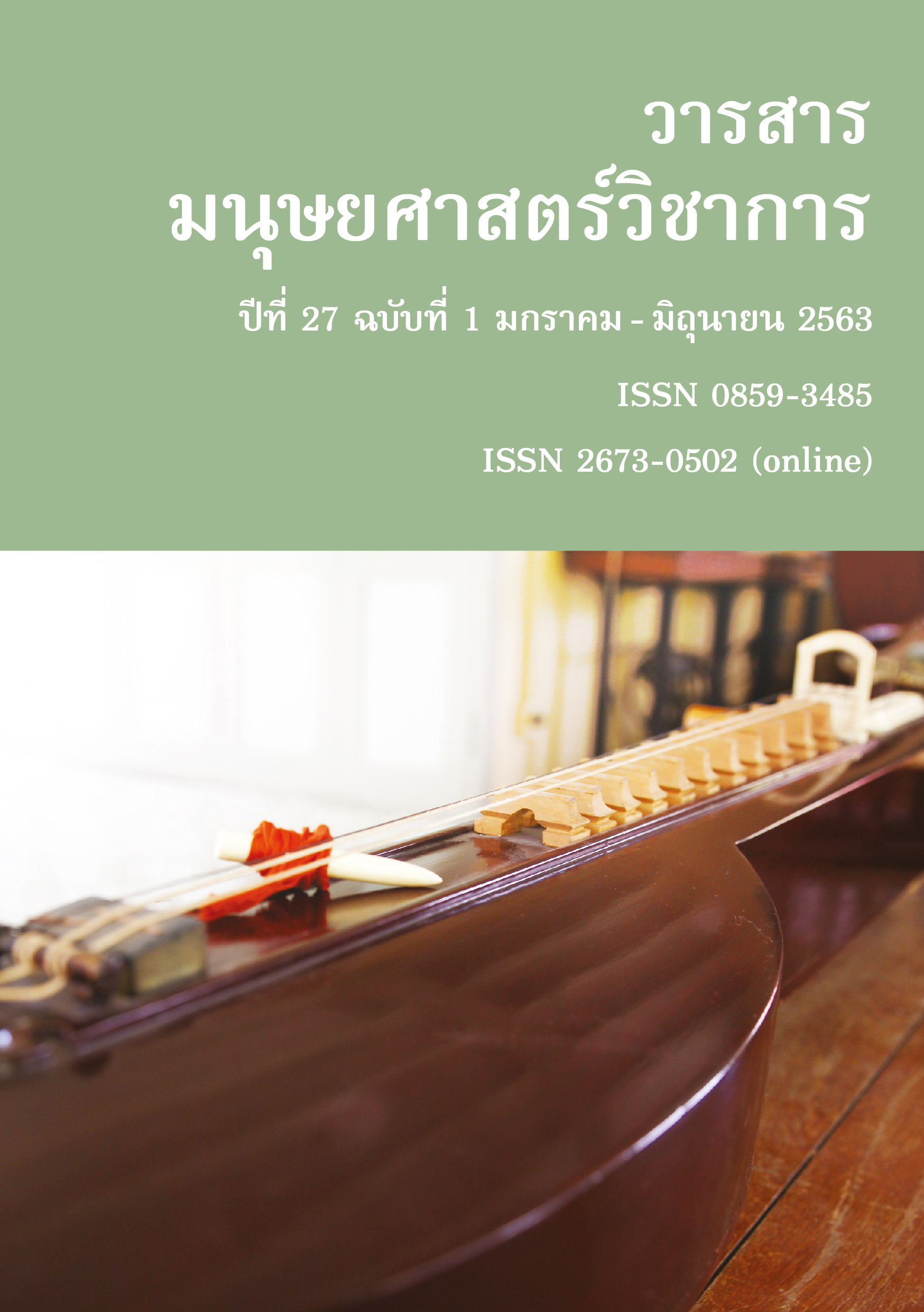Image Influencing the Phuket Travelling Decision of European Tourists
Main Article Content
Abstract
This research aimed to: 1) study on the image of Phuket province affecting European tourists 2) explore the travel decision of European tourists who take a trip to Phuket, and 3) study on the image of the tourist attraction as a factor affecting European tourists in deciding a travel destination in Phuket. The sample population for this research is European tourists who take a trip to Phuket. The survey sample size had been determined by testing the questionnaire with the 30 samples and calculated Partial R2 to estimate the sample size using the G*Power program according to Cohen's (1977). Based on sample estimation, the effect size is equal to 0.0683 calculated from 30 samples. The probability of type I errors (α) is equal to 0.1 and number of variables predicted is equal to 10. Power of Test (1-ß) is equal to 0.95 (Cohen, 1962), creating sample size of 200 samples. The researcher had collected 200 samples of actual data. Statistics used in data analysis are: Frequency, Percentage, Mean, and Standard Deviation (SD). Regarding hypothesis testing, analytical statistics with Multiple Regression had been used.
The results of this study showed that most tourists were Europeans, single male, age between 26 to 35 years old with Bachelor’s degree. Most of them were Germans and their monthly income is 751 – 1,500$ working as a company employee. Based on hypothesis testing, the travel decision in Thailand can be predicted at R2 = 0.591. It found that the image regarding factors affecting travel decision is: natural attraction, infrastructure, atmosphere, social conditions, and worth spending money on. The image affects emotions and feelings with statistically significant at the level of 0.05. Considering the independent variable with powerful ability to predict changes in travel decision making, the most effective one is infrastructure, atmosphere, the image affecting emotions and feelings, natural attraction, social conditions, and worth spending money on, respectively.
Article Details
References
กุลวรา สุวรรณพิมล. (2556). หลักการมัคคุเทศก์. กรุงเทพฯ: แสงดาว.
เกศสุณีย์ สุขพลอย. (2558). การเปรียบเทียบภาพลักษณ์แหล่งท่องเที่ยวและผลกระทบการบอกต่อของแหล่งท่องเที่ยวจังหวัดตรังและสตูลในมุมมองของนักท่องเที่ยว. (วิทยานิพนธ์บริหารธุรกิจมหาบัณฑิต สาขาวิชาการจัดการการท่องเที่ยว). มหาวิทยาลัยสงขลานครินทร์, ภูเก็ต.
กรมการท่องเที่ยว. (2556). แผนพัฒนาบริการท่องเที่ยวเพื่อรองรับการเปิดเสรีบริการท่องเที่ยวปี 2555-2560. กรุงเทพฯ: กระทรวงการท่องเที่ยวและกีฬา.
กฤษากร ชูเลม็ด. (2557). พฤติกรรมการใช้สื่ออินเทอร์เน็ตและความพึงพอใจต่อการใช้สื่ออินเทอร์เน็ตเพื่อการท่องเที่ยวของนักท่องเที่ยวชาวต่างชาติในอำเภอเกาะพะงัน จังหวัดสุราษฎร์ธานี. (นิเทศศาสตรมหาบัณฑิต สาขานิเทศศาสตร์). มหาวิทยาลัยธุรกิจบัณฑิต, กรุงเทพฯ.
จุฬารัตน์ โฆษะ, โกสุนีย์ วรกุลชัยวัฒน์, จุฑาภรณ์ คชสารทักษิณและจิดาภา ช่วยพันธุ์. (2558). การพััฒนาภาคการท่องเที่ยวเพื่อขัับเคลื่อนเศรษฐกิิจภาคใต้. กรุุงเทพฯ: ธนาคารแห่งประเทศไทย.
ฉันทัช วรรณถนอม. (2554). การวางแผนและการจัดนำเที่ยว. กรุงเทพฯ: สามลดา.
ชุติมา นุตยะสกุลและประสพชัย พสุนนท์. (2559). ปัจจัยการตัดสินใจของนักท่องเที่ยวชาวไทยต่อการท่องเที่ยวตลาดน้ำวัดลำพญา จัังหวััดนครปฐม. วารสารวิิทยาลััยดุสิตธานี. 10(1): 132-150.
ชัยพฤกษ์ บุญเลิศ. (2553). พฤติกรรมของนักท่องเที่ยวชาวไทยในการใช้บริการจองห้องพักออนไลน์. (หลักสูตรปริญญาบริหารธุรกิจมหาบัณฑิต สาขาวิชาการจัดการ). มหาวิทยาลัยศรีนครินทรวิโรฒ, กรุงเทพฯ.
ณัฐพล สิริพรพิสุทธิ์. (2558). องค์ประกอบของภาพลักษณ์ การท่องเที่ยวในจังหวัดหนองคายที่มีผลต่อความพึงพอใจและความภักดีของนักท่องเที่ยวชาวไทย. (วิทยานิพนธ์มหาบัณฑิต). มหาวิทยาลัยมหาสารคาม, มหาสารคาม.
ฝนทิิพย์ วุุฒิิพร. (2558). การศึึกษาค่าใช้จ่ายในการท่องเที่่ยวกรุุงเทพมหานครของนัักท่องเที่่ยวชาวยุโรป. สืบค้นเมื่อ 19 ตุุลาคม 2560 จาก http://econ.nida.ac.th.
ฤดี หลิมไพโรจน์ และไกรฤกษ์ ปิ่นแก้ว. (2555). อิทธิพลของภาพลักษณ์และความพึงพอใจของนักท่องเที่ยวที่ส่งผลต่อการกลับมาท่องเที่ยวซ้ำของนักท่องเที่ยวที่จังหวัดปทุมธานี. สืบค้นเมื่อ 30 พฤศจิกายน 2560 จาก http://elibrary.trf.or.th/project_content.asp?PJID=RDG5550047.
รายงานสภาวะเศรษฐกิจท่องเที่ยว. (2559). สรุปสถานการณ์การท่องเที่ยวไทยที่สำคัญไตรมาส 4 ปี 2559. กรุงเทพฯ: กระทรวงการท่องเที่ยวและกีฬา.
เลิศพร ภาระสกุล. (2556). ปัจจัยที่มีอิทธิพลต่อการตัดสินใจเลือกประเทศไทยเป็นจุดหมายปลายทางการท่องเที่ยวของนักท่องเที่ยวชาวต่างประเทศ. วารสารวิชาการมนุษยศาสตร์และสัังคมศาสตร์, 21(36): 105-133.
วิรัช ลภิรัตนกุล. (2540). การประชาสัมพันธ์. กรุงเทพฯ: จุฬาลงกรณ์มหาวิทยาลัย.
วิิวัฒน์ จัันทร์กิ่งทอง. (2555). ภาพลัักษณ์การท่องเที่ยวของประเทศไทย. วารสารวิชาการมหาวิิทยาลััยศิิลปากร. 34(1): 31-50.
ศิิริิเพ็็ญ ดาบเพชร. (2556). การเลืือกสถานที่ท่องเที่ยวของนัักท่องเที่ยวครั้งแรกและนักท่องเที่ยวซ้ำ. วารสารบริิหารธุุรกิิจ เศรษฐศาสตร์และการสื่อสาร. 9(2): 39-59.
ศิวณัฐ กัลยาณวิชัย และนิตนา ฐานิตธนกร. (2559). คุณค่าของตราสินค้าและคุณค่าส่วนบุคคลที่ส่งผลต่อการตัดสินใจซื้อสินค้าแบรนด์เนมในห้างสรรพสินค้าของนักท่องเที่ยวชาวต่างชาติในเขตกรุงเทพมหานคร. ใน การประชุมวิชาการนำเสนอผลงานวิจัยระดับบัณฑิตศึกษา ครั้งที่ 12. กรุงเทพฯ: มหาวิทยาลัยราชภัฏพระนคร.
ศักดิ์ดา ศิริภัทรโสภณ และปารย์ทิพย์ ธนาภิคุปตานนท์. (2554). ความสัมพันธ์ระหว่างคุณภาพการบริการที่ได้รับกับความพึงพอใจและความภักดีของคนไข้: กรณีีศึึกษาโรงพยาบาลเอกชนในเขตกรุุงเทพมหานคร. วารสารวิิจััยมหาวิิทยาลััยขอนแก่น, 10(2): 214-217.
สมยศ วััฒนากมลชััย. (2557). การขนส่งเพื่อการท่องเที่่ยว. กรุุงเทพฯ: พิิมพลัักษณ์.
สำนักงานจัังหวััดภููเก็็ต. (2560). จัังหวััดภููเก็็ต. สืืบค้นเมื่่อ 1 กัันยายน 2560 จาก http://www.phuket.go.th/webpk/file_data/intropk/dataPK59.pdf.
Altınbaşak, I & Yalçin Pek, E. (2010). City image and museums: The case of Istanbul. Tourism and Hospitality Research, 4(3): 241-251.
Cohen, J. (1962). The statistical power of abnormal-social psychological research: A review. Journal of Abnormal and Social Psychology, 65(3), 145-153.
Cohen, J. (1977). Statistical power analysis for the behavioral sciences . New York: Academic.
Dickman, S. (1996). Tourism: An Introductory Text (2nd ed.), Australia: Hodder Education.
Field, A. (2000). Discovering Statistics using SPSS for Windows. London-Thousand Oaks-New Delhi : Sage publications.
Gao, L., and Bai, X. (2014). Online consumer behavior and its relationship to website atmospheric induced flow: Insights into online travel agencies in China. Journal of Retailing and Consumer Services, 21(4): 653-665.
Govers, R. & Go, F.M. (2009). Tourism Destination image formation. In M. Kozak and A Decrop, (Eds.), Handbook of tourist behavior: theory and practice, : 35-49.
Jenkins, Olivia H. (1999). Understanding and Measuring Tourist Destination Images. International Journal of Tourism Research. Retrieved September 2, 2017, from http://citeseerx.ist.psu.edu/viewdoc/download?doi=
1.1.390.9401&rep=rep1&type=pdf.
Mariutti, F. G., Giraldi, J. E., Moura, D., and Crescitelli, E. (2013). The image of Brazil as a tourism destination: An exploratory study of the American market. International Journal of Business Administration. 4(1): 13-26.
O’Leary, S. and Deegan, J. (2003). People, pace, place: Qualitative and quantitative images of Ireland as a tourism destination in F rance. Journal of vacation marketing, 9(3): 213-226.
Promsaka Na Sakolnakorn, T. and Naipinit, A. (2011). The problem and Threat in the management of tourisms sustainability in Phuket. International journal of management & Information systems, 15(2): 111-115.


